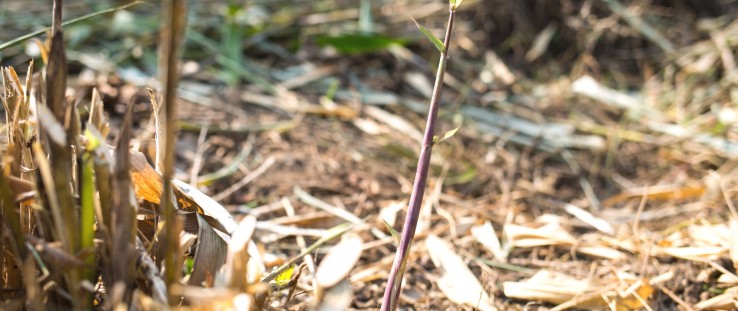 Post harvest, broom grass stubs continue to hold the soil.
Hariyo Ban
Post harvest, broom grass stubs continue to hold the soil.
Hariyo Ban
 Post harvest, broom grass stubs continue to hold the soil.
Hariyo Ban
Post harvest, broom grass stubs continue to hold the soil.
Hariyo Ban
The shortest link between the Tibetan Plateau and the Gangetic Plain is the great Trishuli River. Cutting right through the heart of Nepal, the river is an important corridor for biodiversity, as well as a critical trade route and the lifeblood of the communities living on its banks.
The steep, unforgiving slopes rising sharply upward from the valley floor are held in place by forests or defined by painstaking agricultural terracing. However, over the years, encroachment into government-managed forests has left many slopes bare and unstable, shrinking wildlife corridors and increasing the threat of landslides.
Nearly 70 percent of Nepal’s people depend on agriculture for their livelihoods. Many survive almost solely on tiny plots they farm but technically do not own. The communities living along the Trishuli River are no different. With no right or incentive to maintain terraces, they burn small patches of forest, grow subsistence crops there for a year or two, and then clear more area as the thin topsoil washes away with monsoons.
Many hundreds of hectares of former forests are now bare due to this vicious cycle of poverty-driven shifting cultivation, and now this is being made more dangerous by climate change.
“Nepal’s climate change challenges are unique to the country,” explained Beth Dunford, mission director of USAID/Nepal. “Its people and diverse ecosystems continue to struggle with frequent floods and droughts, more erratic rainfall, and melting glaciers and snow peaks. With the reality of climate change, Nepal is already seeing these kinds of shocks become more intense and more frequent. Some of the hardest hit are inevitably the farming communities reliant on the seasonal rainfall and the poor and marginalized forest-dependent communities.”
Finding a way to address the bare slopes and soil erosion has become a critical challenge.
Enter Ram Babu Paudel, Nepal’s District Forest Office representative for the Tanahu district, which borders the Trishuli River in the mid-hills. “Back in 2012 when I first arrived here,” he said, “the slopes were left bare from incessant cultivation. The landless poor continued to uproot forests, causing damages to the ecosystem in millions just to earn a meager income. The entire region was in danger and no one knew of an alternative.”
And then came an unlikely solution: broom grass.
Broom grass is a tall grass species, native to Nepal, whose thick, mat-like roots spread deeply to bind loose soils, and whose bushy flowers make excellent brooms. It grows in many parts of the country.
Paudel first witnessed the impact of broom grass as a viable income source and environmental resource during his tenure in Illam and Palpa districts, so he knew its potential.
“I decided to approach Hariyo Ban with the broom grass idea,” Paudel said, referencing the name of USAID’s flagship global climate change program in Nepal. Since 2011, the program has been working to reduce threats to Nepal’s great natural diversity in critical biodiverse areas and to help the poorest and most vulnerable people build the resilience they need to thrive in the face of a changing climate.
“Preventing deforestation and supporting regrowth of forests are important for climate change adaptation,” said Dunford. “Thanks to broom grass, this is becoming a reality along the country’s many river banks.”
Working closely with the Government of Nepal and civil society partners, the program has enabled over 400,000 people to improve their lives by conserving biodiversity, adapting to a changing environment, and sustainably managing their natural resources.
Broom grass helps retain soil to regrow vegetation, and is part of USAID/Nepal’s efforts to advance climate change adaptation, support land and soil conservation, and enhance local livelihoods. Broom grass particularly has had a direct impact in averting frequent landslides, helping retain ground moisture and fertility, and improving water quality by reducing soil erosion.
It is also a significant source of income for marginalized communities, primarily women, who collect broom grass to manufacture brooms that are sold around the country.
Gauri Maya Bhujel, like many others, has struggled to survive on the banks of the Trishuli River. But since 2012, she has been trying her hand at growing broom grass.
While Bhujel strips the leaves from harvested stalks of broom grass, her husband takes the stalks, topped with bushy “flowers” that make for excellent sweeping, and sets them out on the roof to dry. Later he will bundle the stalks into brooms the family will sell on the local market.
“Our sad days are behind us. Before, we used to burn the forest to plant maize, but it didn’t grow very well. We barely earned enough to feed us for a month. Now we have broom grass, and we can sell it to buyers from Kathmandu for good money,” Bhujel said. She and her family can make $500 a year from the brooms—income they never had before.
Today, almost 2,000 hectares of government forests have been converted into 455 individual “leasehold forests”—a management scheme where poor or marginalized communities are granted access to government forest under a 40-year, free “lease,” as long as they help maintain a minimum forest cover. Community members, who had existed for years without a patch of ground to call their own, say they have become empowered. They see growing broom grass and planting trees as their future; they want to protect their land.
Paudel explained that “the Hariyo Ban funding allowed us to provide grass cuttings and training to far more communities than we could have if we only used government funding.”
Over 900,000 broom grass cuttings have been distributed so far, and broom grass plantations now cover 155 hectares in 27 of the leasehold forests.
For families like Bhujel’s who are relying on communal broom grass harvests, this year’s crop has provided a substantial livelihood. According to Paudel, Nepalis have harvested approximately 110 metric tons, which at the going rate of 60 Nepali rupees (approximately 60 cents) per kilogram, means a total income of $66,000 for communities that previously lived almost exclusively on subsistence farming.
“Having the alternative livelihood option helps increase the resilience of these very vulnerable communities, which can otherwise be horribly affected by climate change and other stressors,” said Dunford.
Families let no part of the broom grass go to waste. The stripped-away leaves and leftover stalks are used for fuel and food for livestock. Broom grass has the added benefit of crowding out invasive species, while also allowing tree species to sprout up between the stalks.
The Department of Forestry Field Office has been able to plant valuable timber trees and other trees of economic importance, such as cinnamon and lemons, mixed in with the broom grass. This is helping to reconnect the biodiversity corridor along the river that links the low-lying forests of the Terai with forests of the mid-hills and montane forests of the Annapurna Conservation Area. The corridor is used by migrating birds, and may well be used by other species in the future as they move uphill to cooler, damper places due to climate change.
Just like broom grass is taking off along the river banks, the vision is also spreading. “We know our neighbors are also very interested in planting broom grass,” Bhujel said. “There are lots more communities that can be helped this way.”
The broom grass plantations are attracting a lot of attention, including a recent visit by a number of Parliament members, which was widely reported in the national press. Says Paudel, “The interest in broom grass has intensified, as communities are constantly approaching us for guidance. And we happily oblige.”







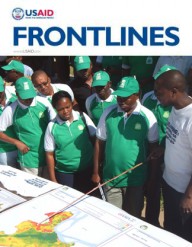

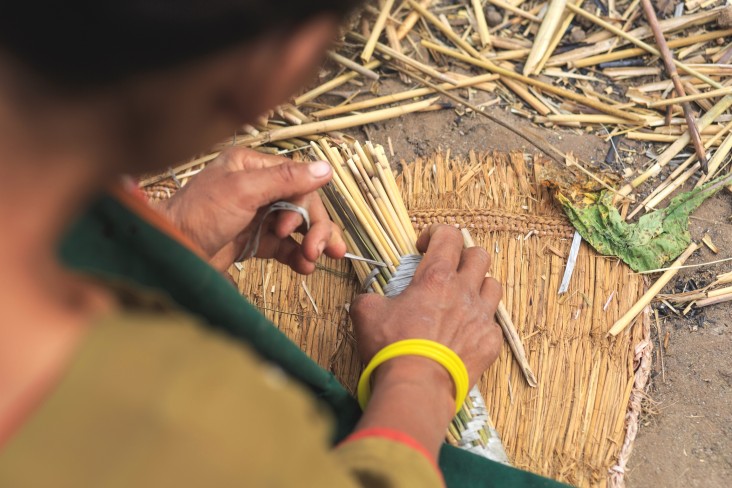
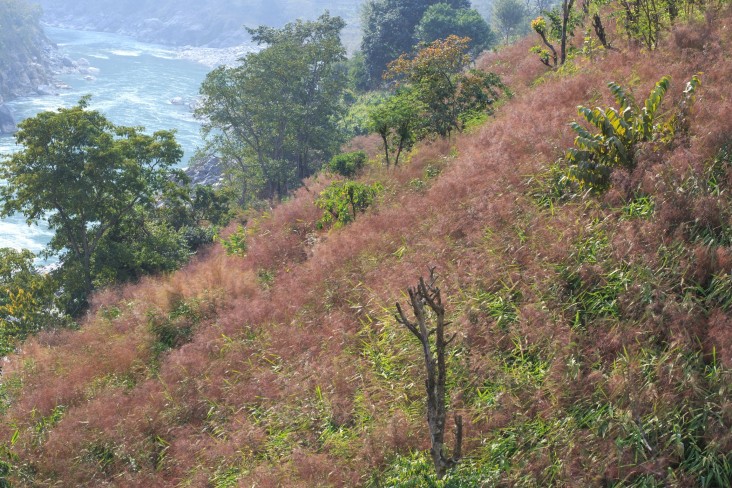

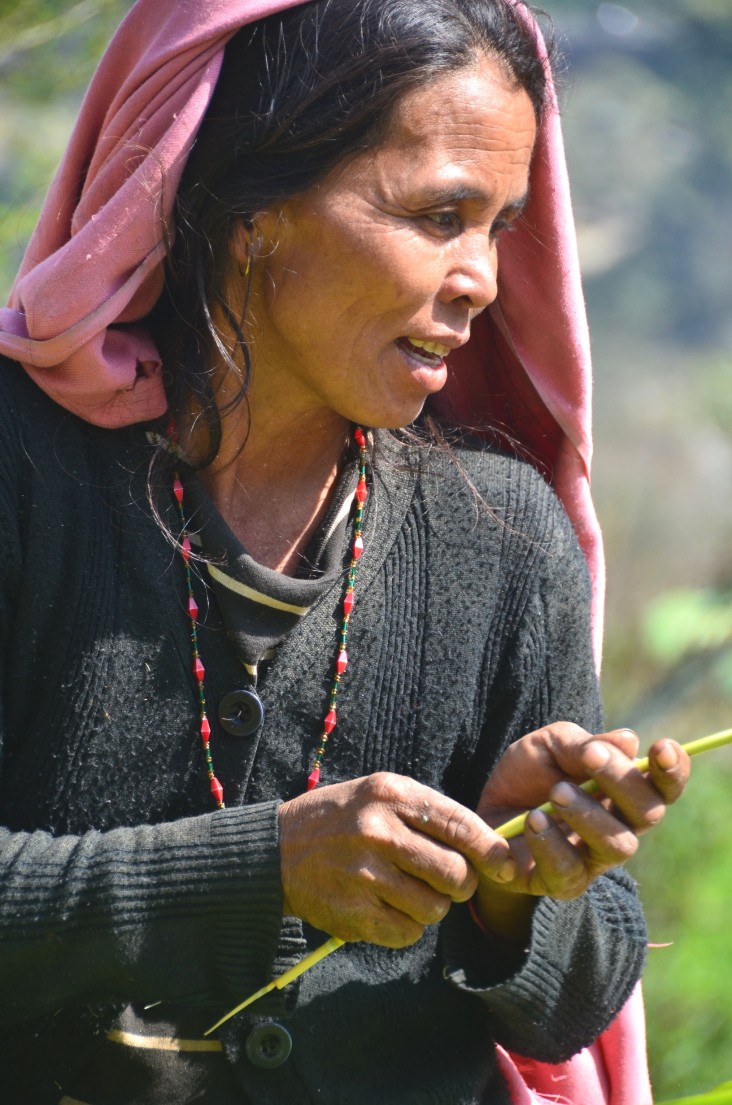
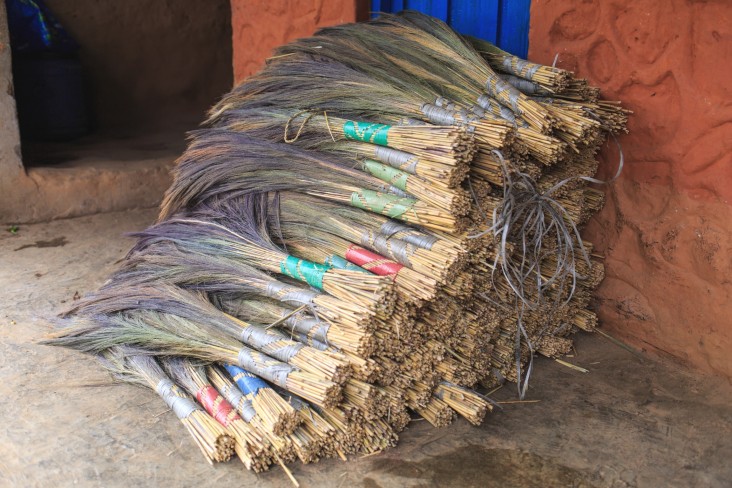
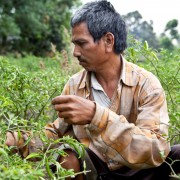
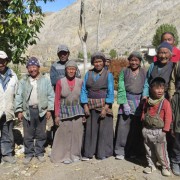
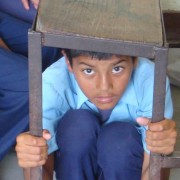
Comment
Make a general inquiry or suggest an improvement.